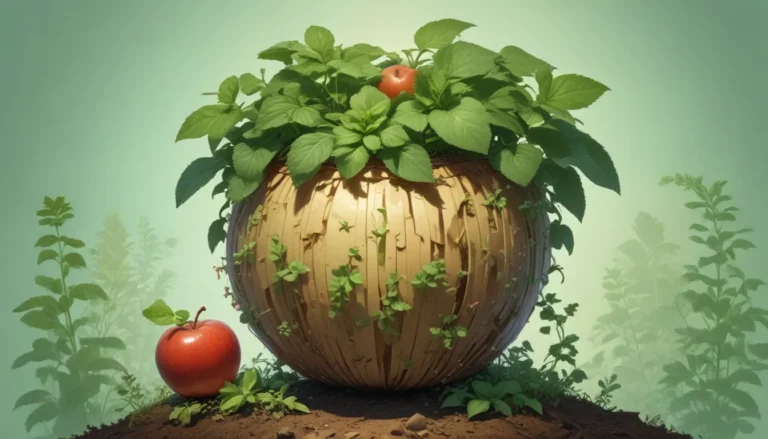Maximizing Your Passionflower Blooms: 7 Factors to Consider

Passionflowers are known for their stunning blossoms, and as a plant enthusiast, witnessing these blooms can be a true joy. But what happens when your passionflower fails to produce those beautiful flowers you’ve been eagerly waiting for?
If you’ve found yourself in this situation, fret not! In this comprehensive guide, we will explore the common reasons why passionflowers might fail to bloom and provide you with practical solutions to address these issues.
Let’s dive into the various factors that could be impacting your passionflower’s blooming potential:
7 Reasons Why Your Passionflower May Fail to Bloom
-
Age: Young passionflower vines may take some time to mature and start blooming, typically requiring around three to four years. However, older plants should be flowering, so if you have an established plant that is not blooming, other factors may be at play.
-
Disease: Various diseases, such as anthracnose, root rot, and mosaic virus, can affect flower development in passionflowers. It’s essential to closely inspect your plant for signs of disease and take appropriate measures to address them.
-
Feeding Problems: While passionflowers are not heavy feeders, ensuring they receive essential nutrients is crucial for optimal growth and blooming. Regular soil testing and proper feeding practices can help maintain plant health.
-
Overcrowding: Excessive crowding of roots, particularly in containers, can hinder blooming. Transplanting into larger containers and periodic pruning can help alleviate overcrowding issues.
-
Pests: Pests like aphids and thrips can damage flowers and delay blooming. Prompt identification and treatment of pest infestations are necessary to protect your passionflowers.
-
Sun Exposure: Passionflowers require adequate sunlight to bloom. Assessing your plant’s sun exposure and making necessary adjustments, such as trimming nearby plants or relocating the vine, can promote blooming.
-
Water: Inconsistent watering practices can stress passionflowers and inhibit blooming. Maintaining appropriate soil moisture levels and ensuring good drainage are essential for plant health and flower production.
While these factors may seem daunting, addressing them can significantly impact your passionflower’s blooming potential. By understanding and actively managing these issues, you can put the flower back into your passionflowers and enjoy a bountiful display of blossoms.
Cultivating Vibrant Passionflower Blooms: Practical Solutions
-
Age: If your passionflower is relatively young, exercise patience as it matures. For older plants not blooming, investigate other potential issues that may be affecting flower development.
-
Disease: Identify any signs of disease in your passionflower and follow appropriate treatment protocols. Proper plant care and disease prevention strategies are key to promoting blooming.
-
Feeding Problems: Conduct regular soil tests to assess nutrient levels and adjust feeding practices accordingly. Avoid over-fertilization, especially with nitrogen-rich fertilizers, to prevent nutrient imbalances.
-
Overcrowding: Monitor root growth and transplant overcrowded plants into larger containers or outdoor spaces. Pruning excess growth and maintaining adequate spacing can enhance blooming.
-
Pests: Vigilantly inspect your passionflower for pest infestations and implement pest control measures promptly. Natural remedies or targeted treatments can help protect your plant from damaging insects.
-
Sun Exposure: Evaluate your plant’s sun exposure and make necessary adjustments to ensure it receives sufficient sunlight. Proper positioning and trimming of nearby vegetation can optimize blooming conditions.
-
Water: Establish a consistent watering routine to maintain optimal soil moisture levels for your passionflower. Address drainage issues and soil quality to prevent water-related stress and promote healthy blooming.
By proactively addressing these factors, you can create an ideal environment for your passionflower to thrive and bloom abundantly. Remember that each plant is unique, so observing and responding to your plant’s specific needs is essential for successful cultivation.
Sharing Your Passionflower Success Stories
As you implement these strategies to enhance your passionflower’s blooming potential, we invite you to share your experiences and insights with our community. Your feedback and success stories can inspire and guide others on their journey to growing vibrant passionflowers.
Together, we can create a supportive and knowledgeable network of plant enthusiasts dedicated to cultivating beautiful blooms and fostering a love for gardening.
For more information on cultivating exquisite vines and enhancing your gardening experience, explore our additional guides:
- The Complete Clematis Growing Guide
- Best Non-Invasive Flowering Vines to Grow in the North
- How to Grow Hyacinth Bean Vines
Remember, each plant has its unique requirements, and with a little care and attention, you can transform your passionflower into a flourishing masterpiece of natural beauty.
Conclusion
Passionflowers are not just plants; they are living expressions of nature’s beauty and vitality. By understanding the factors that impact their blooming potential and taking proactive steps to address them, you can unlock the full splendor of these magnificent blooms.
Let your passion for gardening and botanical wonder guide you as you nurture your passionflowers to reach their full blooming potential. Embrace the journey of discovery and growth, and revel in the joy of witnessing your passionflowers bloom in all their glory.
Together, let’s cultivate a world abundant with vibrant blooms and thriving plant life, one passionflower at a time.





